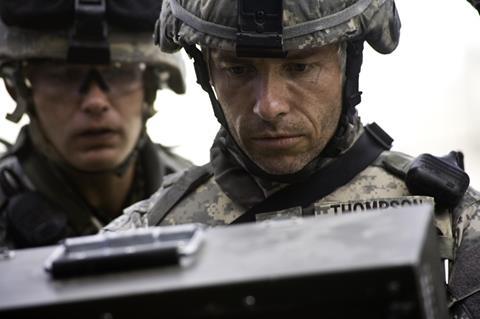
For many, Kathryn Bigelow’s The Hurt Locker is one of the most tense cinematic experiences of the year, but Bigelow insists she is merely reflecting the real lives of the US bomb-disposal units in Baghdad.
“A day in the life of a bomb ‘tech’ in Baghdad, where bombs are at the epicentre of the conflict, is so inherently dramatic that I didn’t need to give it many cinematic flourishes. It doesn’t need it. Mark [Boal, the screenwriter and producer] and I wanted to keep the piece very reportorial, and let the story unfold, stand aside and not embellish it. The tension is inherent in the profession we are covering.”
At the same time, Bigelow says, she was careful to ensure the audience was well-placed within the geography of each location.
“Bomb disarmament protocols are about 30 metres containment, so the audience needs to know where the bomb tech is in relation to the bomb at all times. That’s why I had four cameras working all the time. I am constantly cutting back and forth from the wide shot, and I think that also contributes to the tension. You know where you are. You are never sure where you are with pounding music and frenetic cuts. It is trying to be very clear and graphic about where you are in relation to the two wires sticking out of the ground.”
That meant a lot of coverage, and Bigelow says she arrived back in the US with more than a million feet of film from her 44-day shoot. “Just to put that in perspective, my editor also cut Spider-Man and they didn’t have that amount of film on that, which shot for 200 days. I wanted to sit down in the cutting room and have the luxury of 10 options.”
For Bigelow, The Hurt Locker offered a chance to report on what she believes is an under-reported conflict. “For me, as a member of the general public, the conflict was very abstract and I was incredibly curious. I thought these characters were extremely provocative. They have the most dangerous jobs in the world, yet they have volunteered to do them. I thought this would make a very interesting film.
“It was an opportunity to humanise these men,” she continues, “and to look at the prospect of survival with a magnifying glass. Because we have a great script and great actors, these men really come alive for the audience and I think you really identify with them. You really come to care about them and believe in their wellbeing.”
Mike Goodridge


















No comments yet